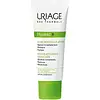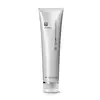What's inside
What's inside
 Key Ingredients
Key Ingredients

 Benefits
Benefits

 Concerns
Concerns

 Ingredients Side-by-side
Ingredients Side-by-side

Water
Skin ConditioningCetearyl Isononanoate
EmollientPolymethyl Methacrylate
Propylheptyl Caprylate
EmollientSqualane
EmollientGlycerin
HumectantDiglycerin
HumectantSteareth-2
EmulsifyingSteareth-21
CleansingButylene Glycol
HumectantCetyl Alcohol
EmollientDimethicone
EmollientPhenoxyethanol
PreservativeBrassica Campestris Sterols
EmollientGlyceryl Stearate
EmollientPEG-100 Stearate
Sodium Acrylate/Sodium Acryloyldimethyl Taurate Copolymer
Emulsion StabilisingAcrylates/C10-30 Alkyl Acrylate Crosspolymer
Emulsion StabilisingChlorphenesin
AntimicrobialParfum
MaskingIsohexadecane
EmollientPhytosphingosine
Skin ConditioningO-Cymen-5-Ol
AntimicrobialPolysorbate 80
EmulsifyingTocopheryl Acetate
AntioxidantTromethamine
BufferingAsiaticoside
AntioxidantOpuntia Ficus-Indica Stem Extract
Skin ConditioningRaspberry Seed Oil/Palm Oil Aminopropanediol Esters
Skin ConditioningBiosaccharide Gum-1
HumectantSorbitan Oleate
EmulsifyingDisodium Phosphate
BufferingWater, Cetearyl Isononanoate, Polymethyl Methacrylate, Propylheptyl Caprylate, Squalane, Glycerin, Diglycerin, Steareth-2, Steareth-21, Butylene Glycol, Cetyl Alcohol, Dimethicone, Phenoxyethanol, Brassica Campestris Sterols, Glyceryl Stearate, PEG-100 Stearate, Sodium Acrylate/Sodium Acryloyldimethyl Taurate Copolymer, Acrylates/C10-30 Alkyl Acrylate Crosspolymer, Chlorphenesin, Parfum, Isohexadecane, Phytosphingosine, O-Cymen-5-Ol, Polysorbate 80, Tocopheryl Acetate, Tromethamine, Asiaticoside, Opuntia Ficus-Indica Stem Extract, Raspberry Seed Oil/Palm Oil Aminopropanediol Esters, Biosaccharide Gum-1, Sorbitan Oleate, Disodium Phosphate
Water
Skin ConditioningHoney Extract
HumectantC12-15 Alkyl Benzoate
AntimicrobialDimethicone
EmollientHydroxyethyl Acrylate/Sodium Acryloyldimethyl Taurate Copolymer
Emulsion StabilisingEthoxydiglycol
HumectantButylene Glycol
HumectantIsohexadecane
EmollientCyclopentasiloxane
EmollientEthylhexyl Palmitate
EmollientPolymethyl Methacrylate
Hibiscus Abelmoschus Extract
MaskingChenopodium Quinoa Seed Extract
Skin ConditioningPalmitoyl Oligopeptide
CleansingCetyl Alcohol
EmollientEchinacea Purpurea Extract
MoisturisingAlgae Extract
EmollientCyclohexasiloxane
EmollientHelianthus Annuus Seed Oil
EmollientSodium Hyaluronate
HumectantPEG-8
HumectantIlex Paraguariensis Leaf Extract
PerfumingPEG-7 Trimethylolpropane Coconut Ether
EmulsifyingSqualane
EmollientSteareth-20
CleansingTocopheryl Acetate
AntioxidantLaminaria Digitata Extract
Skin ProtectingAloe Barbadensis Leaf Juice
Skin ConditioningSorbitan Isostearate
EmulsifyingPolyisobutene
PEG-75 Stearate
Glyceryl Stearate
EmollientPolysorbate 60
EmulsifyingCeteth-20
CleansingGlyceryl Polymethacrylate
Disodium EDTA
Aminomethyl Propanol
BufferingParfum
MaskingPhenoxyethanol
PreservativeChlorphenesin
AntimicrobialWater, Honey Extract, C12-15 Alkyl Benzoate, Dimethicone, Hydroxyethyl Acrylate/Sodium Acryloyldimethyl Taurate Copolymer, Ethoxydiglycol, Butylene Glycol, Isohexadecane, Cyclopentasiloxane, Ethylhexyl Palmitate, Polymethyl Methacrylate, Hibiscus Abelmoschus Extract, Chenopodium Quinoa Seed Extract, Palmitoyl Oligopeptide, Cetyl Alcohol, Echinacea Purpurea Extract, Algae Extract, Cyclohexasiloxane, Helianthus Annuus Seed Oil, Sodium Hyaluronate, PEG-8, Ilex Paraguariensis Leaf Extract, PEG-7 Trimethylolpropane Coconut Ether, Squalane, Steareth-20, Tocopheryl Acetate, Laminaria Digitata Extract, Aloe Barbadensis Leaf Juice, Sorbitan Isostearate, Polyisobutene, PEG-75 Stearate, Glyceryl Stearate, Polysorbate 60, Ceteth-20, Glyceryl Polymethacrylate, Disodium EDTA, Aminomethyl Propanol, Parfum, Phenoxyethanol, Chlorphenesin
Ingredients Explained
These ingredients are found in both products.
Ingredients higher up in an ingredient list are typically present in a larger amount.
Butylene Glycol (or BG) is used within cosmetic products for a few different reasons:
Overall, Butylene Glycol is a safe and well-rounded ingredient that works well with other ingredients.
Though this ingredient works well with most skin types, some people with sensitive skin may experience a reaction such as allergic rashes, closed comedones, or itchiness.
Learn more about Butylene GlycolCetyl Alcohol is a fatty alcohol. Fatty Alcohols are most often used as an emollient or to thicken a product.
Its main roles are:
Though it has "alcohol" in the name, it is not related to denatured alcohol or ethyl alcohol.
The FDA allows products labeled "alcohol-free" to have fatty alcohols.
Learn more about Cetyl AlcoholChlorphenesin is a synthetic preservative. It helps protect a product against bacteria in order to extend shelf life. In most cases, Chlorphenesin is paired with other preservatives such as phenoxyethanol and caprylyl glycol.
Chlorphenesin is a biocide. This means it is able to help fight the microorganisms on our skin. It is also able to fight odor-releasing bacteria.
Chlorphenesin is soluble in both water and glycerin.
Studies show Chlorphenesin is easily absorbed by our skin. You should speak with a skincare professional if you have concerns about using Chlorphenesin.
Learn more about ChlorphenesinDimethicone is a type of synthetic silicone created from natural materials such as quartz.
What it does:
Dimethicone comes in different viscosities:
Depending on the viscosity, dimethicone has different properties.
Ingredients lists don't always show which type is used, so we recommend reaching out to the brand if you have questions about the viscosity.
This ingredient is unlikely to cause irritation because it does not get absorbed into skin. However, people with silicone allergies should be careful about using this ingredient.
Note: Dimethicone may contribute to pilling. This is because it is not oil or water soluble, so pilling may occur when layered with products. When mixed with heavy oils in a formula, the outcome is also quite greasy.
Learn more about DimethiconeGlyceryl Stearate is a mix of glycerin and stearic acid.
It is used to stabilize the mixing of water and oil ingredients. By preventing these ingredients from separating, it can help elongate shelf life. It can also help thicken the product's texture.
As an emollient, it helps soften skin and supports barrier-replenishing ingredients.
In cosmetics, Glyceryl Stearate is often made from vegetable oils or synthetically produced.
This ingredient may not be fungal-acne safe
Fun fact: The human body also creates Glyceryl Stearate naturally.
Learn more about Glyceryl StearateIsohexadecane is added to enhance texture, emulsify, and to help cleanse. It is an isoparrafin. It is a component of petrolatum.
Due to its large size, Isohexadecane is not absorbed by the skin. Instead, it sits on top and acts as an emollient. Emollients help keep your skin soft and smooth by trapping moisture within.
Isohexadecane is often used in products designed to help oily skin. It is lightweight and non-greasy while helping to moisturize. When mixed with silicones, it gives a product a silky feel.
Learn more about IsohexadecaneParfum is a catch-all term for an ingredient or more that is used to give a scent to products.
Also called "fragrance", this ingredient can be a blend of hundreds of chemicals or plant oils. This means every product with "fragrance" or "parfum" in the ingredients list is a different mixture.
For instance, Habanolide is a proprietary trade name for a specific aroma chemical. When used as a fragrance ingredient in cosmetics, most aroma chemicals fall under the broad labeling category of “FRAGRANCE” or “PARFUM” according to EU and US regulations.
The term 'parfum' or 'fragrance' is not regulated in many countries. In many cases, it is up to the brand to define this term.
For instance, many brands choose to label themselves as "fragrance-free" because they are not using synthetic fragrances. However, their products may still contain ingredients such as essential oils that are considered a fragrance by INCI standards.
One example is Calendula flower extract. Calendula is an essential oil that still imparts a scent or 'fragrance'.
Depending on the blend, the ingredients in the mixture can cause allergies and sensitivities on the skin. Some ingredients that are known EU allergens include linalool and citronellol.
Parfum can also be used to mask or cover an unpleasant scent.
The bottom line is: not all fragrances/parfum/ingredients are created equally. If you are worried about fragrances, we recommend taking a closer look at an ingredient. And of course, we always recommend speaking with a professional.
Learn more about ParfumPhenoxyethanol is a preservative that has germicide, antimicrobial, and aromatic properties. Studies show that phenoxyethanol can prevent microbial growth. By itself, it has a scent that is similar to that of a rose.
It's often used in formulations along with Caprylyl Glycol to preserve the shelf life of products.
This ingredient is also known as PMMA. It is a polymer microsphere, composed of tiny, perfectly spherical particles formed from repeating units.
In cosmetics, PMMA is mainly used to give a soft or blurring effect. The transparent particles are able to scatter light and help reduce the appearance of fine-lines and imperfections.
PMMA is also able to enhance the texture of products by add a smooth feel.
Learn more about Polymethyl MethacrylateSqualane is an emollient that helps the skin hold onto moisture. It's an oily liquid that occurs naturally in certain types of fish and plant oils.
Because squalane boosts hydration in the skin, it also comes with plenty of benefits: it is an antioxidant and can help fight free radicals and skin damage. Squalane is also found to have a detoxifying effect when applied.
Squalane comes from squalene, which occurs naturally within the sebum of our skin. It is one of the oils our skin produces to keep itself hydrated. Squalane is the hydrogenated version of squalene and has a longer shelf life.
Research shows that squalane is non-irritating (even at 100% concentration).
In general, it's a fantastic ingredient. It does a great job at hydrating the skin, and it's suitable for those with sensitive skin.
The source of squalane may impact malassezia / fungal acne. This is because olive oil derived squalane can contain impurities such as fatty acids and plant waxes. Sugarcane derived squalane is recommended for anyone with malassezia concerns.
Is squalane vegan?
This depends on the source. Squalane can be derived from both plants and animals. Most squalane used in skincare comes from plants.
Please note: the source of squalane is only known if disclosed by the brand. We recommend reaching out to the brand if you have any questions about their squalane.
Read more about squalene with an "e".
Is squalane an oil?
Squalane is often called an oil, but it’s technically not; it’s a hydrocarbon, meaning it’s only made of carbon and hydrogen, unlike true oils which are triglycerides made of fatty acids and glycerol.
The term “oil-free” isn’t regulated, so companies can define it however they want. Some exclude all oils, while others just avoid mineral oil or comedogenic oils.
While some people avoid oils thinking they cause breakouts, the right kind of oil (or oil-like ingredient like squalane) can actually help balance and hydrate your skin. It’s worth testing out simple oils or squalane to see what works best for your skin.
Learn more about SqualaneTocopheryl Acetate is AKA Vitamin E. It is an antioxidant and protects your skin from free radicals. Free radicals damage the skin by breaking down collagen.
One study found using Tocopheryl Acetate with Vitamin C decreased the number of sunburned cells.
Tocopheryl Acetate is commonly found in both skincare and dietary supplements.
Learn more about Tocopheryl AcetateWater. It's the most common cosmetic ingredient of all. You'll usually see it at the top of ingredient lists, meaning that it makes up the largest part of the product.
So why is it so popular? Water most often acts as a solvent - this means that it helps dissolve other ingredients into the formulation.
You'll also recognize water as that liquid we all need to stay alive. If you see this, drink a glass of water. Stay hydrated!
Learn more about Water